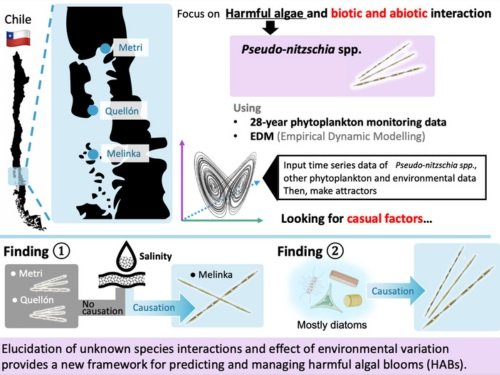Paris, France.- The first ever guidebook on the growing threat harmful algal blooms pose to seawater desalination plants has been published.
Launched by UNESCO’s Intergovernmental Oceanographic Commission, the 500+ page document has been put together with input from 63 desalination and algal bloom professionals.
The guidance takes data from 12 desalination plants which have faced algal blooms to provide practical advice for site operators.
Other chapters address fundamental features of algal blooms, species identification, HAB ecology, toxins, biomass, and extracellular products. It also discusses ways to maintain plant operations when challenged by an increase in suspended solids and organic loads associated with HABs.
Called, Harmful Algal Blooms and Desalination: A Guide to Impacts, Monitoring, and Management, the guidance tackles an issue which affects both human health and the distribution of desalinated water.
The publication was sponsored by the Middle East Desalination Research Center (MEDRC), the United States Agency for International Development (USAID) and UNESCO’s Intergovernmental Oceanographic Commission.
Summary
Stay Always Informed
Join our communities to instantly receive the most important news, reports, and analysis from the aquaculture industry.
Arid countries throughout the world are heavily reliant on seawater desalination for drinking and industrial process water. With nearly 20,000 plants operating globally and capacity projected to rise 12% per year, the industry is large and growing. A major operational challenge facing the industry is also expanding globally – the phenomena termed harmful algal blooms or HABs. Algal “blooms” are cell proliferations caused by the growth and accumulation of individual species; they occur in virtually all bodies of water. Cells can reach concentrations sufficient to make the seawater appear red (hence the common term “red tide”), though other colors are also observed, and many HABs are invisible.
Of the thousands of algal species, most are beneficial to humans and the environment, but some cause harm due to either their potent toxins or the copious quantities of dissolved and particulate organic matter they generate. Marine toxins pose a risk to both thermal and seawater reverse osmosis (SWRO) plants while the organics typically impacts only SWRO plants.
Impacts of HABs are a significant issue in desalination, exacerbated by the lack of knowledge of these phenomena among plant operators, engineers, and others in the industry, including regulatory agencies. This Manual was prepared to provide practical information about HABs, their toxins, biomass, and extracellular products, monitoring approaches inside and outside plants, treatment technologies, and risk assessment strategies. Case studies arepresented describing HAB events at desalination plants throughout the world, detailing impacts and the strategies used to combat them. Their experiences and lessons learned can be beneficial to others encountering similar challenges. This Manual, with its practical areas of guidance and multidisciplinary approach, should be of great value to many in the industry.
Reference (open):
Anderson D. M., S. F. E. Boerlage, M. B. Dixon (Eds), Harmful Algal Blooms (HABs) and Desalination: A Guide to Impacts, Monitoring and Management. Paris, Intergovernmental Oceanographic Commission of UNESCO, 2017. 538 pp. (IOC Manuals and Guides No.78.)(English.) (IOC/2017/MG/78).
http://unesdoc.unesco.org/images/0025/002595/259512E.pdf
Editor at the digital magazine AquaHoy. He holds a degree in Aquaculture Biology from the National University of Santa (UNS) and a Master’s degree in Science and Innovation Management from the Polytechnic University of Valencia, with postgraduate diplomas in Business Innovation and Innovation Management. He possesses extensive experience in the aquaculture and fisheries sector, having led the Fisheries Innovation Unit of the National Program for Innovation in Fisheries and Aquaculture (PNIPA). He has served as a senior consultant in technology watch, an innovation project formulator and advisor, and a lecturer at UNS. He is a member of the Peruvian College of Biologists and was recognized by the World Aquaculture Society (WAS) in 2016 for his contribution to aquaculture.



